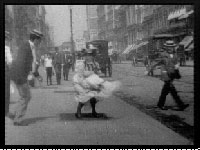Presidential Moments: Inauguration
Same old, same old—another president, another inaugural speech, right? Maybe not. Match the president to the fact that made his inauguration unique.
1. Which U.S. president did not use a Bible at his inauguration?
Franklin Pierce. He placed his hand on a law book. Pierce was suffering a crisis in faith after the death of his 11-year-old son in a train accident on the way to Washington for the inaugural. And he didn't "swear" to the oath; instead, he "affirmed" it. (Beyer, Greatest Presidential Stories Never Told, 9)
2. Which mishap occurred at the inauguration of George Washington?
Nobody thought to bring a Bible to take the oath of office. A quick search of Federal Hall failed to turn up a copy of the Bible. New York chancellor Robert Livingston, who was to administer the oath, remembered there would be a Bible at the nearby Saint John’s Masonic Lodge. The Masonic Bible was opened to a random page from Genesis and Washington placed his hand on it as Livingston administered the oath. After reciting the oath of office, President Washington added the unscripted words, "so help me God," a practice that has been followed by almost every president since. The Bible, now known as the Washington Bible, has been used by four other presidents for their inaugurations. A fifth, George W. Bush, had to scrap plans to use the Bible because of bad weather. The book was also used at Washington's funeral, the dedication of the Washington Monument in 1885, and the rededication of the U.S. Capitol cornerstone in 1959. (Beyer, Greatest Presidential Stories Never Told, 8)
3. Which long-winded president delivered the longest inaugural address?
William Henry Harrison. On 4 March 1841, Harrison gave his 8,000-word speech for nearly two hours. At age 68, he was the oldest president yet. To demonstrate that he maintained plenty of youthful vigor, he spoke without an overcoat or hat to ward off the cold. Harrison caught a cold that turned into pneumonia and died a month later. (Beyer, Greatest Presidential Stories Never Told, 46)
4. Which president gave the shortest address?
George Washington. After taking the oath of office on the balcony of Federal Hall in New York City, Washington proceeded to the Senate chamber where he read a speech before members of Congress and other dignitaries. His second inauguration took place in Philadelphia, Pennsylvania, on 4 March 1793, in the Senate chamber of Congress Hall. There he gave the shortest inaugural address on record—just 135 words—before repeating the oath of office. (Inaugural History, at http://inaugural.senate.gov/history/daysevents/inauguraladdress.cfm)
5. Why did Zachary Taylor postpone his inauguration?
The date in question, 4 March 1849, fell on a Sunday. James K. Polk's term of office officially ended at noon on Sunday, March 4, 1849. Taylor refused to take the oath of office until Monday, March 5, 1849. Missouri senator David Rice Atchison was serving as president pro tempore of the Senate, which made him next in line after the president and vice president. (Beyer, Greatest Presidential Stories Never Told, 60 )
6. Which president was inaugurated in secret?
Rutherford B. Hayes. The presidential election of 1876 was one of the closest and most disputed elections in history. The outcome was in dispute until a few days before the inauguration, when Republican Hayes was declared the winner by one electoral vote. Angry Democrats threatened to protest. President Ulysses S. Grant ordered troops to Washington to prevent trouble. Grant's term was due to expire at noon on Sunday, March 4. In observation of the Sabbath, Hayes' inauguration wasn't scheduled until Monday. Republicans feared that Democrats might somehow take advantage of the one-day gap to install Tilden in the White House or otherwise embarrass them and decided to take preemptive action. Before a gala White House dinner on Saturday, March 3, Grant escorted Hayes to the Red Room. There, in front of a handful of cabinet members, Chief Justice Morrison Waite secretly administered the oath of office. The men returned to the dinner without announcing the inauguration. Hayes was publicly inaugurated the following Monday at noon. (Beyer, Greatest Presidential Stories Never Told, 96)
7. Whose inaugural address was the first to be broadcast on television?
Harry S. Truman. Truman’s inaugural address was broadcast in 1949. James Buchanan's 1857 inauguration was the first to be photographed. William McKinley held the first inaugural ceremony recorded by a motion picture camera in 1897. Herbert Hoover's inauguration was the first recorded by talking newsreel in 1929. In 1997, William J. Clinton was the first President whose inaugural ceremony was broadcast live on the Internet. (Inaugural Inaugural http://inaugural.senate.gov/history/factsandfirsts/index.cfm)
8. Who was the first president to take the oath of office in Washington, DC?
Thomas Jefferson. On March 4, 1801, Jefferson walked with few attendants and little fanfare to the Capitol building from his nearby lodgings at a boarding house to become the first president to be inaugurated in the nation's new capital city. Upon entering the Senate chamber, now the Old Supreme Court Chamber, Jefferson took the oath of office administered by Chief Justice John Marshall and addressed the audience gathered in the Senate chamber. After his inaugural address he finished his day with a meal at the boarding house. (Inaugural, http://inaugural.senate.gov/history/daysevents/potusswearingin02.cfm)
9. How many presidents did NOT take the oath of office in Washington, DC?
6. George Washington: 1789—Federal Hall, New York City; 1793—Congress Hall, Philadelphia; John Adams: 1797—Congress Hall, Philadelphia; Chester A. Arthur: 1881—residence, New York City; Theodore Roosevelt: 1901—residence, Buffalo, New York; Calvin Coolidge: 1923—residence, Plymouth, Vermont; Lyndon B. Johnson: 1963—Air Force One, Dallas, Texas
10. Who was the first president to be inaugurated on January 20 instead of March 4?
Franklin D. Roosevelt. A change made by the 20th Amendment to the Constitution called for Roosevelt to be inaugurated on 20 January 1937. This year also marked the first time the vice president was inaugurated outdoors on the same platform with the president. (Inaugural, http://inaugural.senate.gov/history/factsandfirsts/index.cfm)
- Inaugural Histroy, http://inaugural.senate.gov/history/
- Rick Beyer, Greatest Presidential Stories Never Told: 100 Tales from History to Astonish, Bewilder, and Stupefy (New York: Collins, 2007)
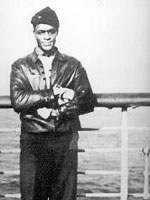
 a pushcart ice cream vendor in New York, in 1896, who also, perhaps, invented the ice cream sandwich by putting a slice of ice cream between waffle squares cut from a sheet. Other sources say the ice cream cone has its origins in the mists of history, but was first described in Mrs. Marshall's Cookery Book, whose author, Agnes Marshall, published it in London in 1888. Still others discern a woman licking an ice cream cone in an 1807 picturing fashionable customers eating at the Frascati café in Paris, although this is uncertain because cone-shaped ice cream bowls were not unknown at the time.
a pushcart ice cream vendor in New York, in 1896, who also, perhaps, invented the ice cream sandwich by putting a slice of ice cream between waffle squares cut from a sheet. Other sources say the ice cream cone has its origins in the mists of history, but was first described in Mrs. Marshall's Cookery Book, whose author, Agnes Marshall, published it in London in 1888. Still others discern a woman licking an ice cream cone in an 1807 picturing fashionable customers eating at the Frascati café in Paris, although this is uncertain because cone-shaped ice cream bowls were not unknown at the time.
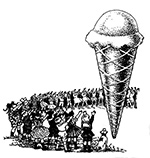

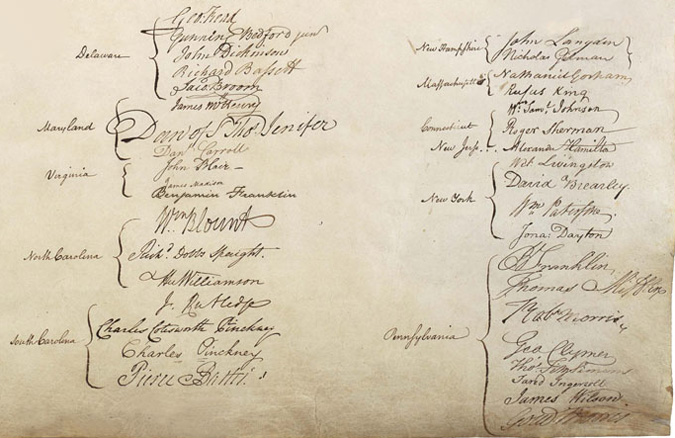
 Sylvester Graham (1794-1851) was the most renowned food reformer of the 19th century. He wrote The Philosophy of Sacred History Considered in Relation to Human Aliment and the Wines of Scripture. Graham was known by the nickname of "Doctor Sawdust" because of his promotion of the virtues of bread made with whole-wheat ("Graham") flour. His followers set up "Graham hotels," like small, provisional utopias, where guests following Graham's dietary regimen could board with like-minded progressive reformers.
Sylvester Graham (1794-1851) was the most renowned food reformer of the 19th century. He wrote The Philosophy of Sacred History Considered in Relation to Human Aliment and the Wines of Scripture. Graham was known by the nickname of "Doctor Sawdust" because of his promotion of the virtues of bread made with whole-wheat ("Graham") flour. His followers set up "Graham hotels," like small, provisional utopias, where guests following Graham's dietary regimen could board with like-minded progressive reformers. Business partners Henry D. Seymour and William Heston of Ravenna, Ohio, registered the Quaker Man as a trademark in 1877 (the first trademark registered for a breakfast cereal). They made Quaker Oats, steel-cut oats packaged in 2-pound paper boxes with cooking directions on the outside, an innovation for the time. The name "Quaker Oats" would seem to tie the product to the owners' religious views, but Seymour said he chose it simply because he found an encyclopedia article on Quakers and decided that the qualities described there—integrity, honesty, and purity—were ones he wanted to link to his company's product. Heston credited himself with the name, saying that while walking on the streets of Cincinnati, he had seen a picture of Quaker William Penn, whose clothes and character inspired him to choose the name. Nevertheless, either way, it couldn't have hurt to conjure the figure of a religious Nonconformist, waving a scroll inscribed "Pure," on the package of a breakfast cereal. Potential customers would have associated it with the other Progressive health food items, especially wholegrain breakfast foods, that were being urged by food reformers descended from Protestant Nonconformists and Inner Light advocates.
Business partners Henry D. Seymour and William Heston of Ravenna, Ohio, registered the Quaker Man as a trademark in 1877 (the first trademark registered for a breakfast cereal). They made Quaker Oats, steel-cut oats packaged in 2-pound paper boxes with cooking directions on the outside, an innovation for the time. The name "Quaker Oats" would seem to tie the product to the owners' religious views, but Seymour said he chose it simply because he found an encyclopedia article on Quakers and decided that the qualities described there—integrity, honesty, and purity—were ones he wanted to link to his company's product. Heston credited himself with the name, saying that while walking on the streets of Cincinnati, he had seen a picture of Quaker William Penn, whose clothes and character inspired him to choose the name. Nevertheless, either way, it couldn't have hurt to conjure the figure of a religious Nonconformist, waving a scroll inscribed "Pure," on the package of a breakfast cereal. Potential customers would have associated it with the other Progressive health food items, especially wholegrain breakfast foods, that were being urged by food reformers descended from Protestant Nonconformists and Inner Light advocates. Ellen Gould White (1827-1915), the Seventh-Day Adventist prophetess, had a vision in 1863 in which the relation of physical health to spiritual health, the body to the spirit, was revealed to her. She set up the Western Health Reform Institute in Battle Creek, as well as other sanitariums. She published the pamphlet, Health, or How to Live. Don't trust the appetite, she said, which has become perverted, or the dietary customs of society. She counseled eating grains, nuts, fruit, and whole-grain flour.
Ellen Gould White (1827-1915), the Seventh-Day Adventist prophetess, had a vision in 1863 in which the relation of physical health to spiritual health, the body to the spirit, was revealed to her. She set up the Western Health Reform Institute in Battle Creek, as well as other sanitariums. She published the pamphlet, Health, or How to Live. Don't trust the appetite, she said, which has become perverted, or the dietary customs of society. She counseled eating grains, nuts, fruit, and whole-grain flour. In 1898, they founded the Sanitas Food Company, to sell health food via mail order. In 1906, Will established the Battle Creek Toasted Corn Flakes Company. When J. H. sold to W. K. his interest in the corn flakes company, J. H. used the proceeds in 1911 to create the influential Race Betterment Foundation, in order to prepare the way for a super race of "new men," and to set up a "eugenic registry" that evaluated couples for breeding based on their genetic pedigrees in order to stop the propagation of "defectives."
In 1898, they founded the Sanitas Food Company, to sell health food via mail order. In 1906, Will established the Battle Creek Toasted Corn Flakes Company. When J. H. sold to W. K. his interest in the corn flakes company, J. H. used the proceeds in 1911 to create the influential Race Betterment Foundation, in order to prepare the way for a super race of "new men," and to set up a "eugenic registry" that evaluated couples for breeding based on their genetic pedigrees in order to stop the propagation of "defectives."  Danforth then contacted "Dr. Everett Ralston," whose real name was Albert Webster Edgerly (aka Edmund Shaftsbury or Shaftesbury) (1852-1926), a debarred lawyer, con man, cult leader, self-appointed health expert, and elocution teacher, who had founded perhaps the world's first multilevel marketing scheme. This was the Ralston Health Club, a Washington, D.C.-based, national membership health products club, with 800,000 members in 1898.The Club required its members to pay large amounts for a series of books that told the secret of how to live for 200 years by collecting and preserving in the body the occult force of "Glame" and learning to speak his invented "Adam-Man tongue." Danforth secured "Dr. Ralston's" endorsement of Purina Wheat, and added his name to Danforth's company—Ralston-Purina. Danforth's cereal became Ralston Health Club Breakfast Food, then Ralston Purina Wheat, then Instant Ralston.
Danforth then contacted "Dr. Everett Ralston," whose real name was Albert Webster Edgerly (aka Edmund Shaftsbury or Shaftesbury) (1852-1926), a debarred lawyer, con man, cult leader, self-appointed health expert, and elocution teacher, who had founded perhaps the world's first multilevel marketing scheme. This was the Ralston Health Club, a Washington, D.C.-based, national membership health products club, with 800,000 members in 1898.The Club required its members to pay large amounts for a series of books that told the secret of how to live for 200 years by collecting and preserving in the body the occult force of "Glame" and learning to speak his invented "Adam-Man tongue." Danforth secured "Dr. Ralston's" endorsement of Purina Wheat, and added his name to Danforth's company—Ralston-Purina. Danforth's cereal became Ralston Health Club Breakfast Food, then Ralston Purina Wheat, then Instant Ralston. 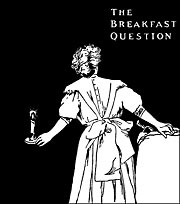
 If you're in Louisiana, the
If you're in Louisiana, the 
